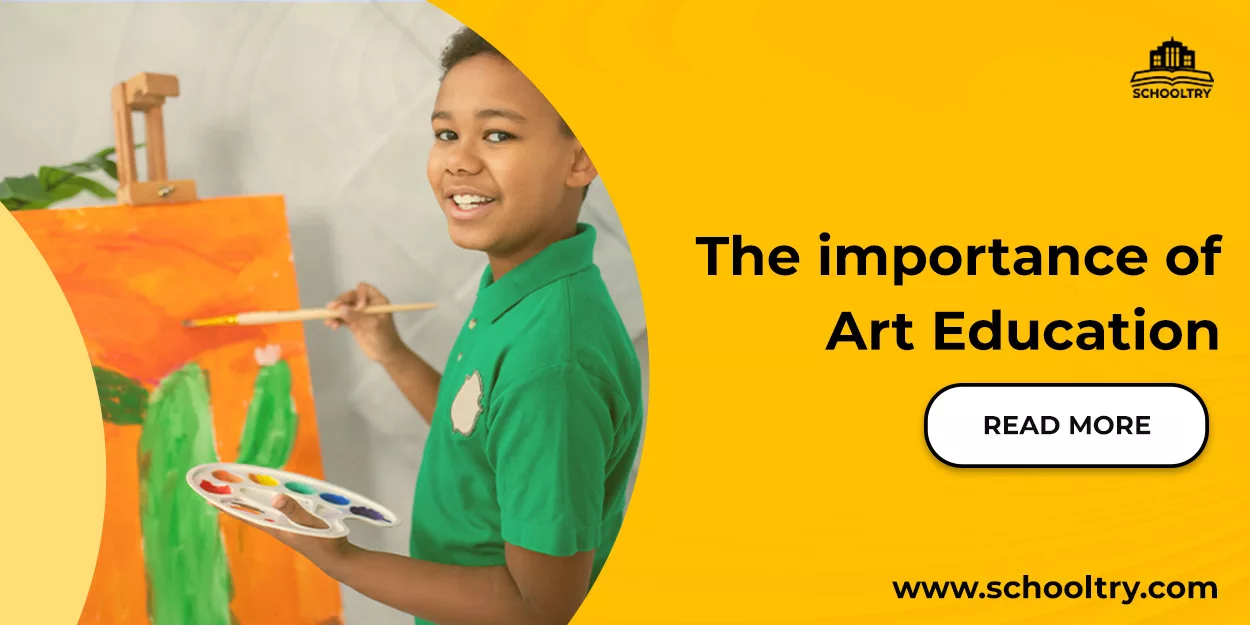Research shows that students who participate in art education tend to have the more academic achievement. Although in most cases it is because they are willing to learn. However that is why a topic like The importance of art education in schools is essential.
Before we go further, What is Art Education?
Art Education majors learn to incorporate the arts into a general classroom curriculum. This therefore gives their students a hands-on, expressive learning experience with incredible impact. Through quality art education students learn to: develop, express and evaluate ideas. Moreover they produce, read and interpret visual images in an increasingly visually oriented world. They also recognize and understand the artistic achievements and expectations of their societies. These basic skills in art develop the intellect and increase visual sensitivity. This helps in creating effective communication, critical thinking and problem-solving skills. In addition, Art Education ~ a collective term referring to a comprehensive and sequential education in separate and distinct artistic disciplines. This includes different art such as: dance, music, drama, media and visual arts.
Also, it refers to the inclusion of arts learning in mainstream education. Moreover students and teachers partner with artists,and/or cultural institutions to incorporate the arts into the curriculum.
History of Art Education.
Art education has its roots in drawing, which, with reading, writing, singing, and playing an instrument, comprised the basic elementary school curriculum in the seventeenth century. Drawing continued to be a basic component of the core curriculum throughout the eighteenth and nineteenth centuries, when educators saw drawing as important in teaching handwork, nature study, geography, and other subjects. Art education later expanded to include painting, design, graphic arts, and the “plastic arts” (e.g., sculpture and ceramics), although art continued to be seen primarily as utilitarian.
In the twentieth century, with the advent of modernism, art education in the United States edged away from a utilitarian philosophy to one of creative expression. The art-making for personal development, although it was less often as a core subject, during the early decades of the century till the advent of World War II. In the postwar period, particularly after the launch of Sputnik in 1957, core-subject emphasis shifted dramatically to mathematics and science. Art education reached a low point in the 1970s, when a shrinking school-age population (the graduating baby boomer generation) and a serious national energy crisis brought about many school closings and program cuts. Art programs were among the first to be reduced or eliminated.
But the 1970s also ushered in a period of intense work by art educators to revive interest in art education. At the Getty Center for Education in the Arts, for example, work began on the implementation of a transformational theory: discipline-based art education (DBAE). This theory proposed that art making (or “studio art”)–the thrust of creative expression–needed to be extended and informed by attention to the complementary disciplines of art history, aesthetics, and art criticism, even when teaching the youngest pupils. DBAE theory, most observers now agree, has been instrumental in reinvigorating art education and gaining a place for art in school reform.
The Importance of Art Education.
01. Motivation to Learn:
Art education helps students to tap into their creativity and provides a different approach to education. Although this will in turn, makes the learning process interesting. It will also boost their interest and help students enhance their motivation to learn.
02. Better school Attendance:
Every student enjoys the work of art. Art work are usually fun and interesting. However When students are excited about the subject matter or Art they actively participate in the activities. They will look forward to learning and they will also love to attend school regularly.
03. Critical thinking:
Critical thinking is a crucial part of Art Education. Moreover When students engage in artistic activities like painting, drawing, music, or theater. This type of activity requires a form of thinking. The students are free to to think outside the box and proffer solutions to real life problems. All these can be done through any form of Art.
Conclusion
According to research,when schools are trying to cut costs, art programs are the first to be reduced.
However, the truth is that art education is not just about painting pictures or performing on stage but also a way of unleashing creativity in students. This means that Art Education should be in every school curriculum.
Are you a school owner or administrator in need of a web solution like SchoolTry to automate, digitize or transform your school works. Click here to register for free and see how it works




